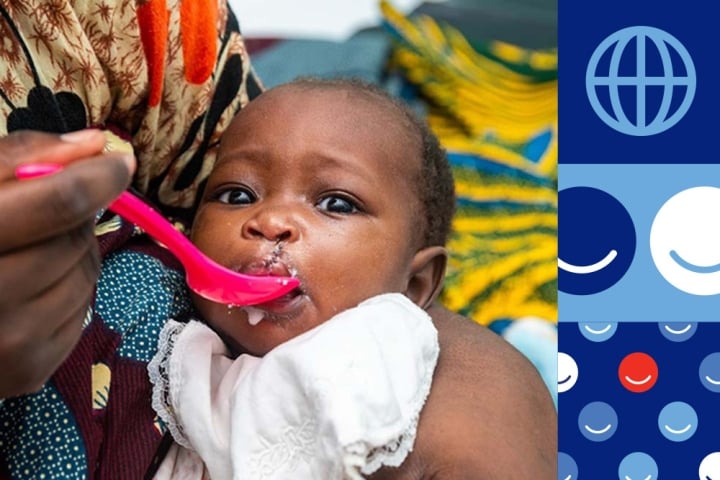New Study Reveals Half of Malnutrition-related Deaths in Those with Clefts Could Be Prevented
Smile Train and The Institute for Health Metrics and Evaluation analyze the devastating impact of orofacial clefts over two decades (2000 - 2020)

New York, NY (October 7, 2022) - In a new report released today, World Smile Day, Smile Train and the Institute for Health Metrics and Evaluation (IHME) at the University of Washington’s School of Medicine find that nearly half of cleft-related malnutrition deaths globally in children under 5 could be prevented with access to adequate nutrition and surgical treatment.
The report provides a first-of-its-kind look at the devastating impact of orofacial clefts over two decades, 2000 to 2020. Clefts occur when certain body parts and structures do not fuse together during fetal development and can cause difficulties eating, breathing, hearing, and speaking. The report synthesized two sets of data, one from Smile Train Express and the other IHME's Global Burden of Disease Modeling demographic group. After pairing and modifying the datasets for alignment, researchers used two meta-regression models to calculate results.
Key findings include:
- If children with clefts did not experience higher rates of undernutrition, as many as 21,000 deaths worldwide could be averted with intervention.
- Over the past 20 years, the number of children born with clefts under the age of 5 has failed to decline significantly.
- Deaths in children with clefts as well as malnutrition-related deaths in those with clefts have declined since 2000, but that progress has been markedly slower and lagged behind the declines in malnutrition-related mortality and child mortality overall in the same time period.
- Compared to underweight children, underweight children living with clefts endure a heavier burden of poor nutrition. They face a higher risk of undernutrition and other potentially life-threatening conditions.
- In 2020, the highest cleft prevalence rates were observed in the countries of north Africa and the Middle East, extending into central Asia and south Asia.
“By combining the forces of Smile Train’s more than 1.5 million surgical records in the Smile Train Express database, including a wealth of nutrition data, and IHME’s comprehensive set of health estimates, we now know more about clefts than ever before,” says Nicholas Kassebaum, MD, an associate professor at the IHME and a lead author of the study. “We hope that this is a call to action for global health leaders to take further action against undernutrition in children with clefts.”
“Clefts are not a cosmetic issue, and this data serves as both a warning and a roadmap.” Susannah Schaefer, President and CEO of Smile Train, adds. “It shows us at Smile Train that we’re on the right track with expanding our nutrition programs, but that we need to do more. When the scale of an issue is this large, and when lives are at stake, you have to act and you have to act together. Smile Train is proud to have made a 5-year commitment to scale investment in nutrition, but we need to call on governments and other organizations to do the same.”
Further findings are available, and you can read the report here.
###
About the methodology: Smile Train and IHME are dedicated to data transparency, with full details for this report’s methodology available online, and a summarized methodology available to reporters upon request.
About Smile Train: Smile Train empowers local medical professionals with training, funding, and resources to provide free cleft surgery and comprehensive cleft care to children globally. We advance a sustainable solution and scalable global health model for cleft treatment, drastically improving children’s lives, including their ability to eat, breathe, speak, and ultimately thrive. To learn more about how Smile Train's sustainable approach means donations have both an immediate and long-term impact, please visit smiletrain.org.
